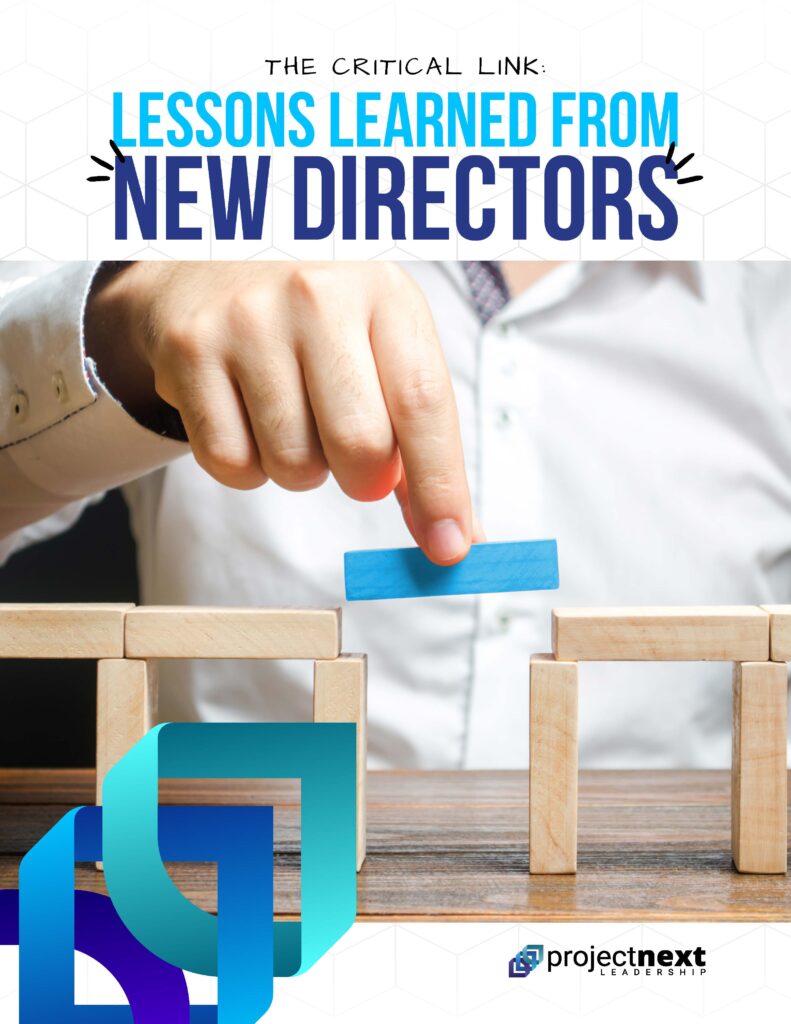Imagine this, you are walking a tightrope, just trying to maintain your balance. You’ve finally found your footing and let out a long sigh of relief – you’ve got this. You confidently take your next step and suddenly the rope starts to shake. You look behind and ahead of you and there are teams pulling in opposition. You suddenly realize that your tight rope has become the centerpiece of the craziest tug-of-war game ever. Which team is going to overpower the other? And where are you going to land in the process?
That’s where leaders in most organizations are today. They are trying to regain their balance while simultaneously being pulled and pushed by vastly opposing forces. Exhausted, drained, and frankly, trying to hold on for dear life.
Recently, we brought together CHROs and Heads of Talent from some of the most forward-thinking organizations for our ProjectNext Leadership HR Roundtable to discuss one big question – “What is the future of leadership?” The most prominent theme that came out of that rich discussion was that leaders of today and tomorrow will need to be agile and able to manage the opposing, and regularly shifting, pressures from all directions…all while charting a new way forward.
We want to share some of the highlights of that discussion with you, shining a light on three of the areas where we see this tightrope tug-o-war most deeply felt by leaders.
The challenges of the “in-between” workplace
One of the first questions that came up among the group was, “How do we continue to navigate where and how we work?” We were surprised because leaders have been balancing the hybrid workplace for 3+ years at this point. One might think that, even if they don’t have it figured out completely, the majority of leaders have become pretty adept at managing this new normal. Instead, what we heard loud and clear, is that most organizations and leaders don’t have it figured out. The HR leaders in the room rallied around the “in-between” workplace. It’s the idea that we know we can’t go back to the way it was before, but we’re not quite sure how to move forward. We are in this uncomfortable limbo zone and no one seems to be happy with it.
Being in the in-between workplace puts new and challenging pressures on leaders across the organization. The uncertainty of this transition period is certainly one contributing factor. However, the HR leaders shared that there is an even more important component – a significant disconnect between the C-Suite and the rest of the organization around expectations of where and how people work. Although there are some outliers, many C-Suite teams are driving their people back to the office to “get back to normal.” The challenge is that their people are
questioning this, asking. “Why do we need to come into the office when we’ve proven we can get work done from anywhere?” “Are we doing this to justify our real estate spend?,” and even worse, “Are we doing this because you don’t trust us?”
The HR leaders in the room wholeheartedly agreed that there is real value in bringing people together to build culture, develop relationships, and foster creativity and innovation. However, how and when we do it is critical.
Changing the paradigm of what it means to return to the office (RTO) will require a significant mindset shift at the top levels of most organizations. Until then, many leaders will be stuck in this in-between zone, needing to be effective across a range of different and shifting working models and managing the conflicting expectations between the executives and many of their employees.
The empathy “snap-back”
Another topic that came up was the idea of the empathy “snap-back.” During the pandemic, we collectively leaned into empathy, caring for the whole person and their needs. Leaders had to take on a new role and support their employees in ways that weren’t needed before the pandemic (or at least not at the same level). Leaders’ responsibilities grew far beyond their role descriptions – from handling COVID-related time off and supporting parents juggling homeschooling and work, to being a listening ear when the stress, fear, and sadness became too much.
However, similar to the disconnect of the in-between workplace, there is a snap-back happening when it comes to empathy. At most organizations, the pendulum seems to have swung to an intense focus on results and efficiency, many times at the expense of the employee. The group we brought together astutely commented, “it’s almost as if the new edict is – we’re back to normal, let’s get back to business – and we’ve forgotten (or ignored) what we learned during the pandemic.” One individual even shared that it felt like we’ve moved back to a command and control model, with little to no room for flexibility or individual needs.
We discussed how stressful, confusing, and disorienting this snap-back can be for both leaders and their people. It also quickly erodes trust, something that is difficult to win back once it’s lost. As leaders build the new normal, they are going to have to find their balance, a place where, we believe, empathy and results aren’t mutually exclusive, but instead complementary and reinforcing.
Socio-political polarization in the workplace
Finally, as the group discussed the capabilities leaders need today and in the future, the importance of effectively managing conflict became very clear. Managing conflict isn’t new. But
what is new, is the arena in which leaders, at all levels, must activate this capability. Due to the escalating socio-political polarization that characterizes our times, leaders are now expected to deal with complex challenges that run far outside their domain. Navigating stark, deeply-held ideological contrasts (whether that plays out within a team dynamic or at a bigger, strategic decision making level), is something that most leaders will have to face at some point, if not regularly. The balance that is required in these situations is delicate yet crucial.
Unfortunately, most leaders today aren’t equipped to manage the escalated level of tension that exists in today’s world. Many leaders may feel that no matter what they say, decide or do, they are going to get caught in the crossfire, which can be paralyzing. Or worse, their lack of awareness leads them to make decisions that can have drastic consequences for the organization and its employees. As this trend continues, organizations will benefit from providing clarity around the boundary of a leader’s role and giving guidance on when and how to respond in these types of situations.
We didn’t solve any of these complex challenges in the room that day, and it was clear that these three areas aren’t the only ones where leaders are stuck on the tightrope tug–o-war, trying to find their balance and the right path forward. This begs the question, how can we better support our leaders in this time of extremes and opposing messages, opinions, and pressures?
Where are you seeing the tightrope tug-of-war playing out? How is it impacting you as a leader?
Know of someone who might enjoy this article? Forward it on or share here.




